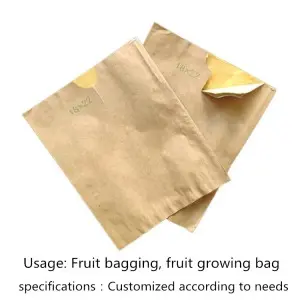វិច្ឆិកា . 11, 2024 15:35 Back to list
using plum pollen can improve the fruit setting rate product
Enhancing Fruit Setting Rates with Plum Pollen Benefits and Techniques
The delicate interplay of pollination is vital in the world of fruit cultivation, particularly for stone fruits like plums. Efficient fruit setting is a key determinant of yield and quality in fruit production, and utilizing plum pollen effectively can significantly improve this outcome. This article discusses the benefits of using plum pollen, techniques for its application, and the broader implications for fruit growers.
Understanding Pollination and Fruit Set
Pollination occurs when pollen grains from the male part of a flower (the anther) reach the female part (the stigma), facilitating fertilization. In plum trees, which are often self-infertile, cross-pollination is crucial. This means that the transfer of pollen between different varieties leads to successful fruit setting. However, achieving optimal fruit set can be challenging due to various factors, including climatic conditions, pollinator presence, and varietal compatibility.
Benefits of Using Plum Pollen for Fruit Setting
Using plum pollen has several advantages that can enhance fruit setting rates
1. Improved Fertilization Rates Plum pollen is specifically adapted to fertilize plum flowers. Its compatibility with the stigma results in a higher likelihood of successful fertilization, thus leading to a greater number of fruits. 2. Greater Genetic Diversity When growers utilize pollen from multiple plum varieties, it promotes genetic diversity among fruit sets. This diversity can improve the resilience of the fruit against pests and diseases.
3. Adaptation to Climatic Variables Different plum varieties can withstand different climatic conditions. By selecting pollen from a variety that thrives in the specific local environment, fruit growers can improve the chances of successful pollination regardless of weather fluctuations.
4. Extended Harvest Period Employing techniques like staggered blooming and targeted pollination can help to extend the harvest season. By timing the application of various plum pollens, growers can spread out the fruiting time, resulting in a prolonged market presence.
using plum pollen can improve the fruit setting rate product

Techniques for Applying Plum Pollen
Maximizing the benefits of using plum pollen requires careful planning and execution. Below are several techniques that fruit growers can adopt
1. Selection of Compatible Varieties It is essential to select plum varieties that bloom at the same time to ensure effective cross-pollination. Not all plum trees will produce pollen that works well with every variety; thus, understanding varietal compatibility is paramount.
2. Timing of Pollination Timing is crucial for successful pollination. Observing local blooming patterns allows growers to apply plum pollen when the female flowers are receptive. This often occurs in early spring when the flowers are blooming and temperatures are conducive.
3. Manual Pollination Techniques In some cases, manual pollination can help increase fruit set rates, especially in areas with limited pollinator activity. Collecting pollen from the chosen varieties and applying it to receptive flowers with a small brush or cotton swab is a straightforward technique.
4. Utilizing Pollinators Encouraging and managing populations of natural pollinators, such as bees, is an effective way to increase pollination rates. Planting native flowering plants nearby can attract pollinators to the plum orchard.
5. Monitoring and Adjusting After applying plum pollen, continuous monitoring for fruit set rates and tree health is vital. Adjustments can be made in future seasons based on observed successes or challenges in the current one.
Conclusion
In conclusion, using plum pollen offers fruit growers a reliable method to enhance fruit setting rates. By understanding the significance of pollination in stone fruits, selecting the right varieties, and employing effective techniques, growers can improve their yields, enhance fruit quality, and adapt to changing environmental conditions. As agricultural practices evolve, the integration of scientific advancements and traditional techniques will be crucial in achieving the best outcomes in fruit production, ensuring a bountiful harvest for years to come.
-
Plant Pollen Analysis with GPT-4 Turbo AI Technology
NewsAug.04,2025
-
AI-Powered Plant Pollen Analysis Using GPT-4 Turbo
NewsAug.03,2025
-
Plant Pollen Analysis: Fast & Accurate with GPT-4 Turbo
NewsAug.02,2025
-
KiwiPollen with GPT-4 Turbo: AI Health Supplement Boost
NewsAug.01,2025
-
Pollen Peach Tree AI Management with GPT-4-Turbo
NewsJul.31,2025
-
Eco Fruit Paper Bags for Peak Freshness | Durability Focused
NewsJul.31,2025